[Weekender] Warm delights on cold nights: Street snacks make a comeback
From pulbbang to sipwonbbang -- winter's comfort foods offer nostalgia, novelty
By Lee Jung-younPublished : Nov. 11, 2023 - 16:01
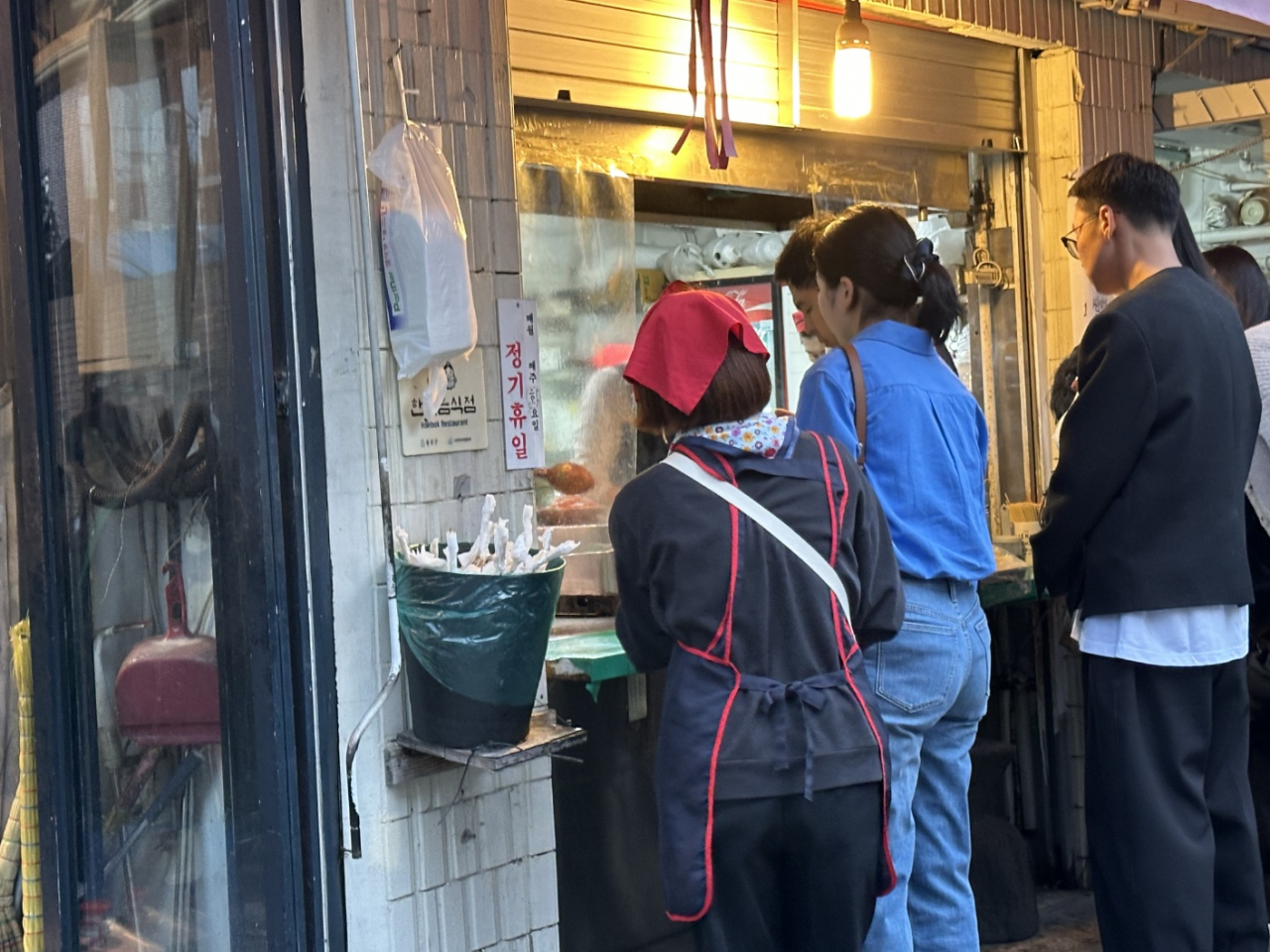
Even in the chilly winter season, when the air gets cold and the sun sets fast, there are still good reasons to take a walk: warm, delicious street snacks. As winter approaches, street vendors attract customers with sweet and savory snacks that one can hold in a hand and enjoy while walking along the street.
"The cold, dark way home from work in winter feels even more exhausting than in mild weather, but when I find a street snack truck or a vendor, it really cheers me up," said Lee Hyung-chan, an office worker in his 30s.
Traditional pulppang, but new ingredients
“Pulppang,” one of the most common winter street snacks, refers to small bread treats baked with red bean paste inside. First, mix flour and water and pour it into a hot cast iron mold. Add some sweet filling — traditionally red bean paste — then pour more dough over it. Flip the dough to heat the bread evenly and gently remove it from the mold. A few of the treats are usually served in a paper bag.
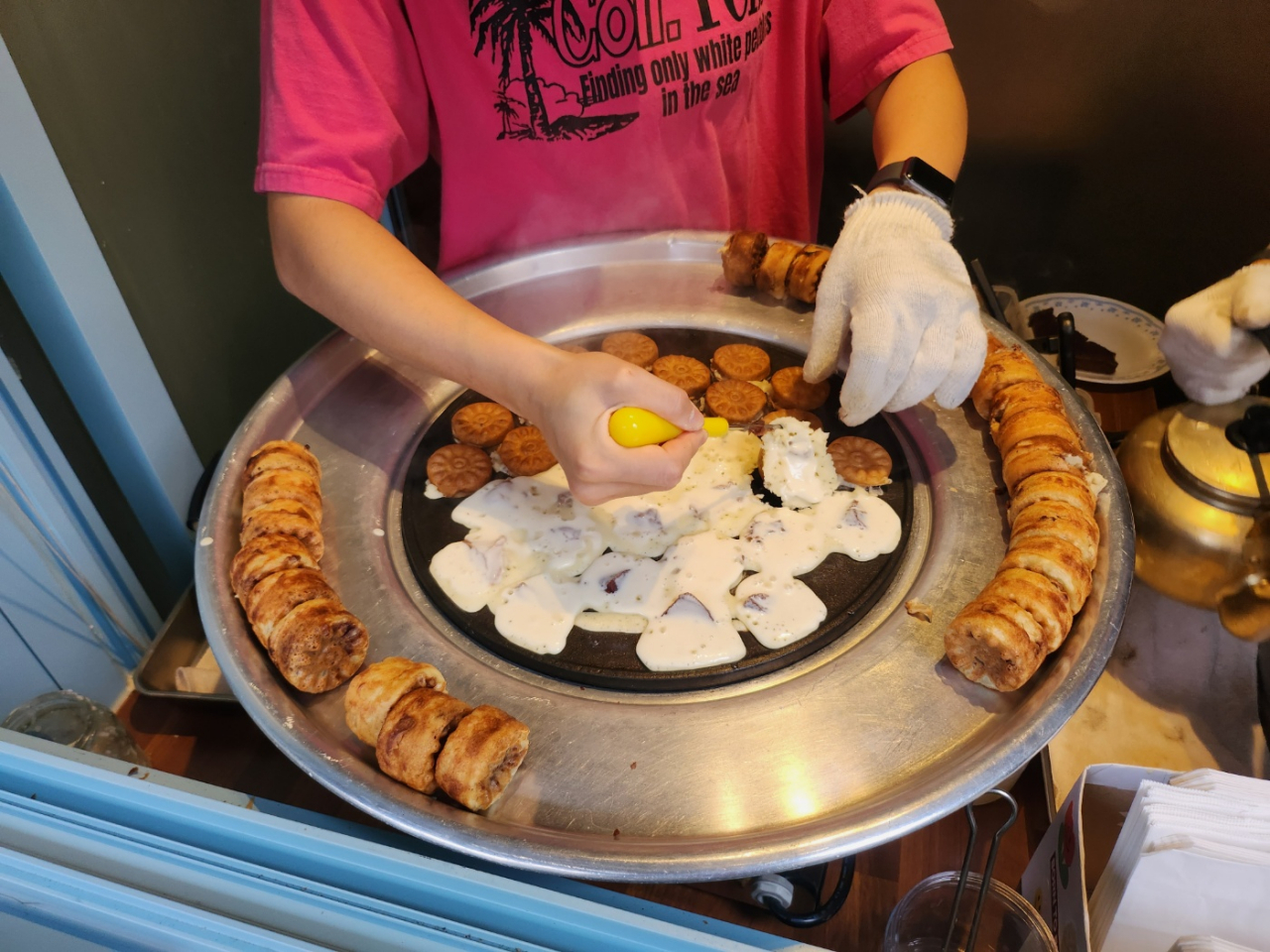
Pulppang is called by different names depending on the shape of the iron mold. It is commonly known as “bungeoppang” when formed into the shape of a fish and “kukhwappang” as a chrysanthemum. “Bungeo” is the Korean word for carp, while “kukhwa” fittingly means chrysanthemum. “Ppang” refers to bread or any confectionery made from flour.
"Red bean paste kukhwappang, (the most basic version), is the bestseller. Still, we are trying different kinds of ingredients every week to provide new flavors," said Lee Jeong-soo, who runs a small kukhwappang store in Yeonhui-dong, western Seoul, with her sister Jeong-eun.
The vendors have experimented with dozens of flavors, including vanilla cream, chocolate, chestnut cream, matcha, mugwort, Earl Grey cream and apple syrup with cinnamon, all of which stimulate customers' curiosity."
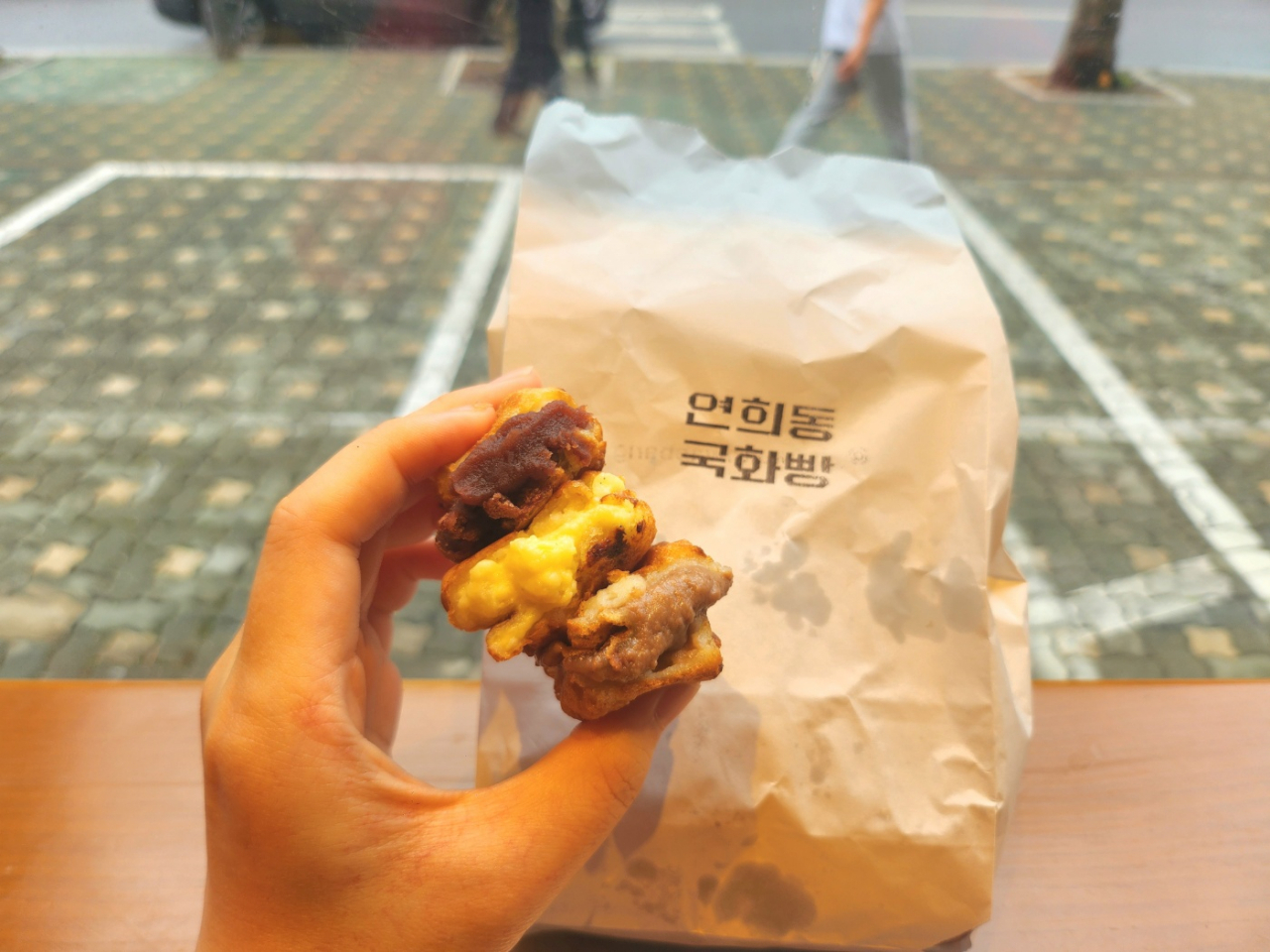
"I like the fluffy texture of kukhwappang, so I look for street vendors whenever winter comes. Personally, I think the vanilla cream went really well with the soft dough," said Lee Seo-hyun, a college student who was waiting in line.
The small, hot kukhwappang that warms passersby’s hands is just 2,000 won ($1.50) for three or four at the sisters' store. Price varies slightly depending on the filling.
Cheesy sipwonppang
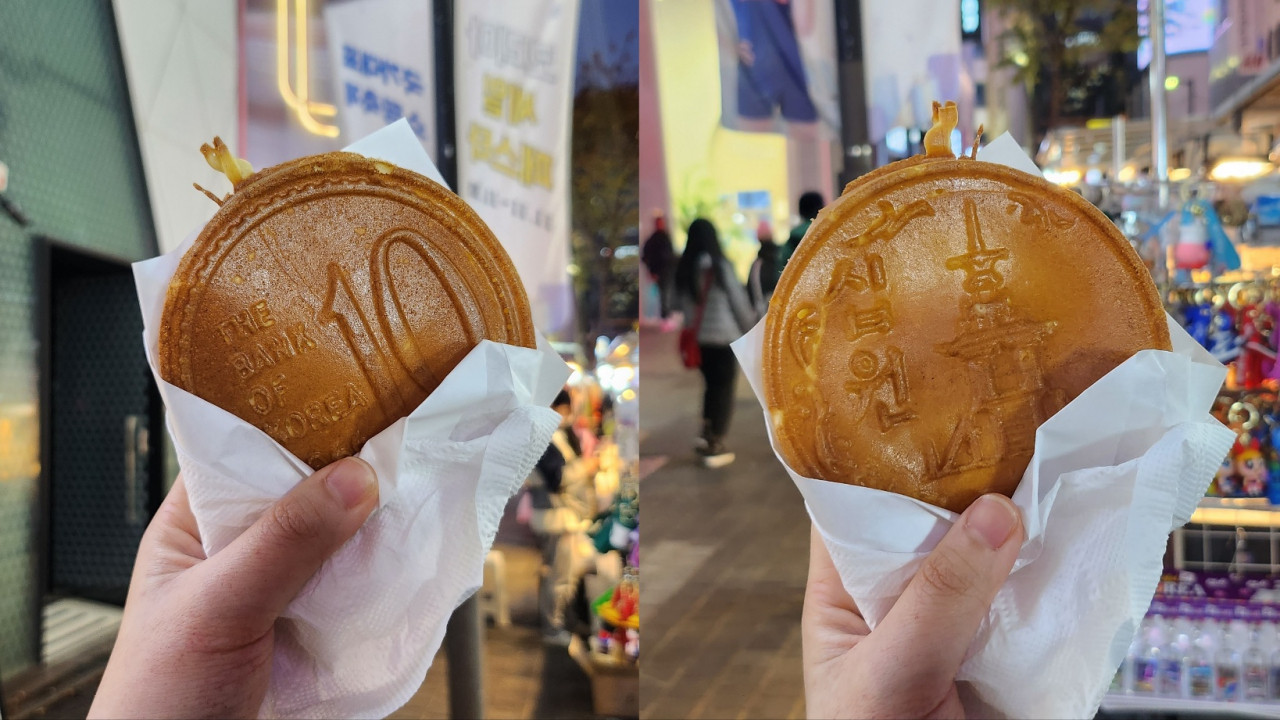
Although it is called "sipwonppang" -- or "10 won waffle" -- this snack certainly costs more than 10 won. The sweet smelling snack with stringy cheese inside is usually priced about 3,000 to 4,000 won each.
Sipwonppang became popular as a tourist product in Gyeongju, North Gyeongsang Province, in the 2010s. The sweet treat looks like the original version of the 10 won coin from 1966.
One side of the waffle carries the imprint of the Dabotap pagoda of the temple Bulguksa, one of the most famous historical landmarks in Gyeongju -- just like the old coin. The other side shows the coin's value, with a big No. 10.
Hot stringy cheese or custard cream can typically be found inside, but some vendors are recently trying other fillings, like chocolate or tomato sauce with minced beef.
However, the snack has been mired in some controversy due to its appearance. The Bank of Korea has been discussing design changes with business operators selling the treat, saying that the waffle uses the currency design without permission.
Fortunately, the sipwonppang design is expected to be maintained in the future, as the BOK said in a parliamentary audit in late October that it would apply the rules flexibly.
Eomuk with hot stew
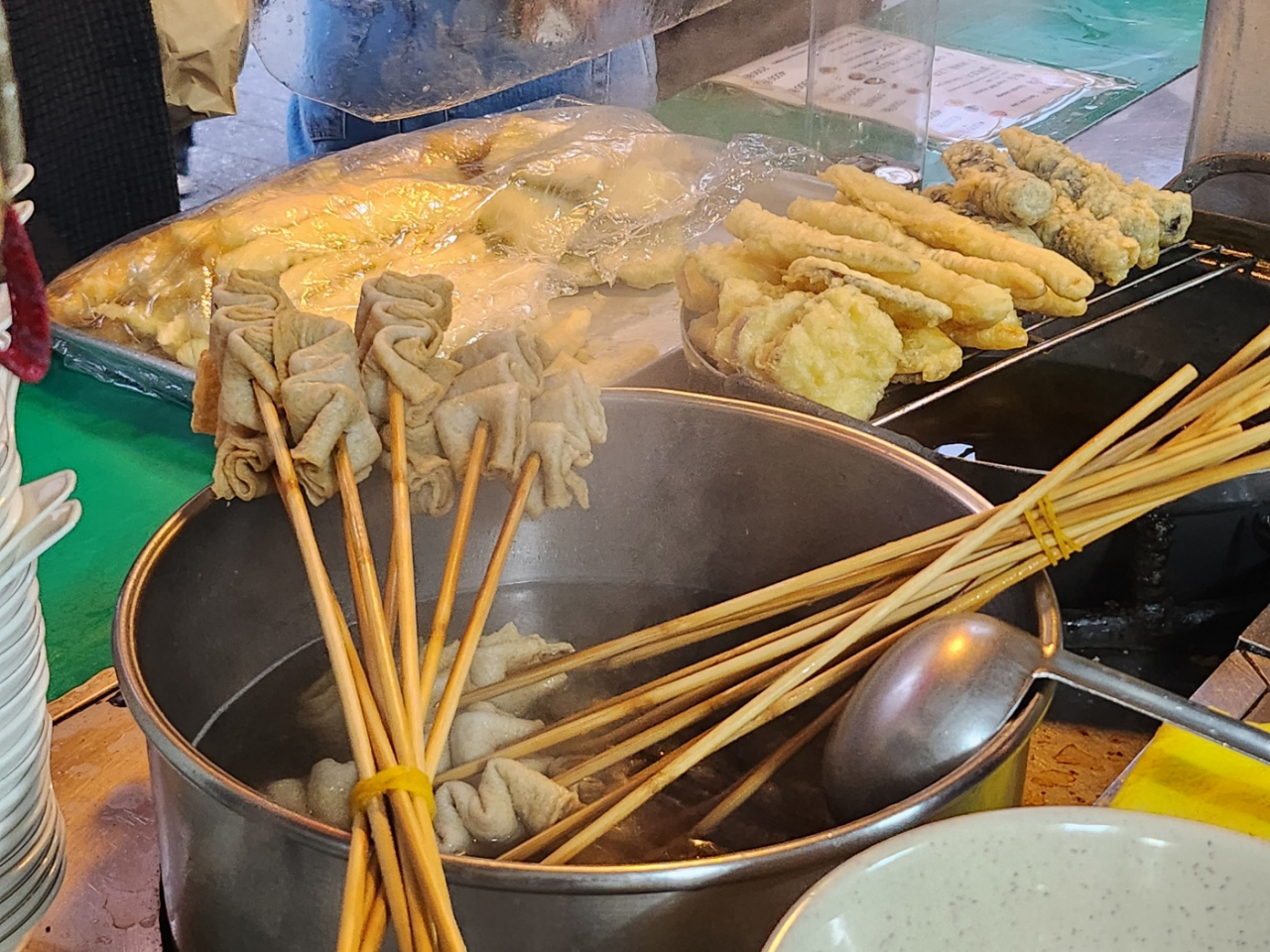
In front of a small snack store in Samcheong-dong, northern Seoul, people of various age groups could be seen lining up, waiting to enjoy one of the most traditional Korean winter snacks: a steaming hot, wavy, skewered snack of "eomuk."
Eomuk, among the most common of street foods all year round, shows its real worth in winter. Made from minced fish and flour, it is often just called "fish cake" in English. It is a popular ingredient or side dish for Korean meals, but in its street snack version it can be seen folded over and skewered on a long wood stick. It varies from store to store, but eomuk is a cheap snack of just about 1,000 to 1,500 won per stick.
Customers can ask for a cup of the dried anchovy broth that the eomuk boils in as well, conveniently warming up one's hand.
"I can have eomuk in the summer as well, but somehow it tastes way better on a chilly winter street," said one customer, with an eomuk stick in one hand and a paper cup with the hot broth in the other.
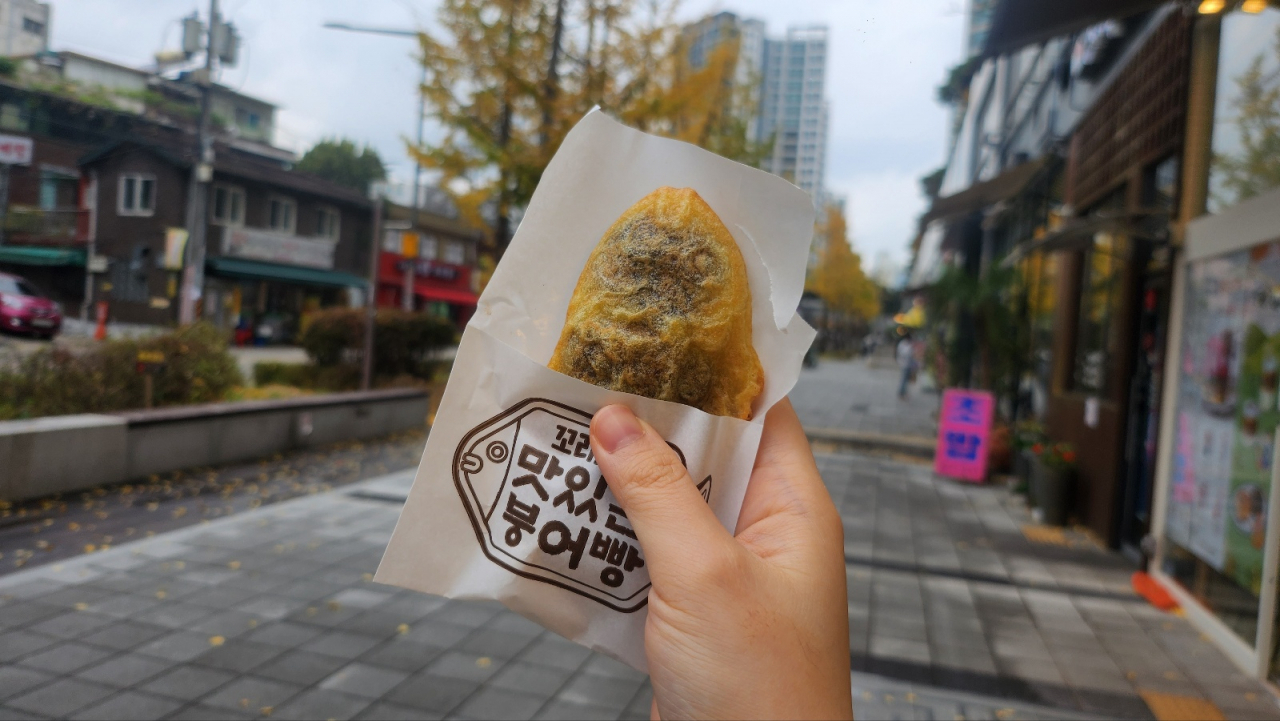
Winter treats at convenience stores
Unlike days past when street vendors and food trucks held a collective monopoly on street snacks, convenience stores have become among the most popular avenues of access to the winter treats.
GS Retail, operator of convenience store franchise GS25, launched its own bungeoppang on Sept. 15. The convenience store's bungeoppang, which looks just like the street vendor version, is about 12 centimeters long and contains red bean paste filling, and is priced at 1,200 won apiece. It comes wrapped in paper and is displayed on stones that maintain the warmth and crispness.
"We traveled all over the country to find appropriate manufacturers and even conducted customer surveys for the launch of bungeoppang," said Lee Jung-soo, a GS25 manager.
Meanwhile, convenience store chain CU has also released instant foods, including with eomuk soup.
"I do prefer hot, steaming snacks from street vendors, but there were no vendors near my house,” said a customer buying bungeoppang at a GS25 location. "It's good that convenience stores launched similar products so I can get some more easily."



















![[Today’s K-pop] Treasure to publish magazine for debut anniversary](http://res.heraldm.com/phpwas/restmb_idxmake.php?idx=642&simg=/content/image/2024/07/26/20240726050551_0.jpg&u=)